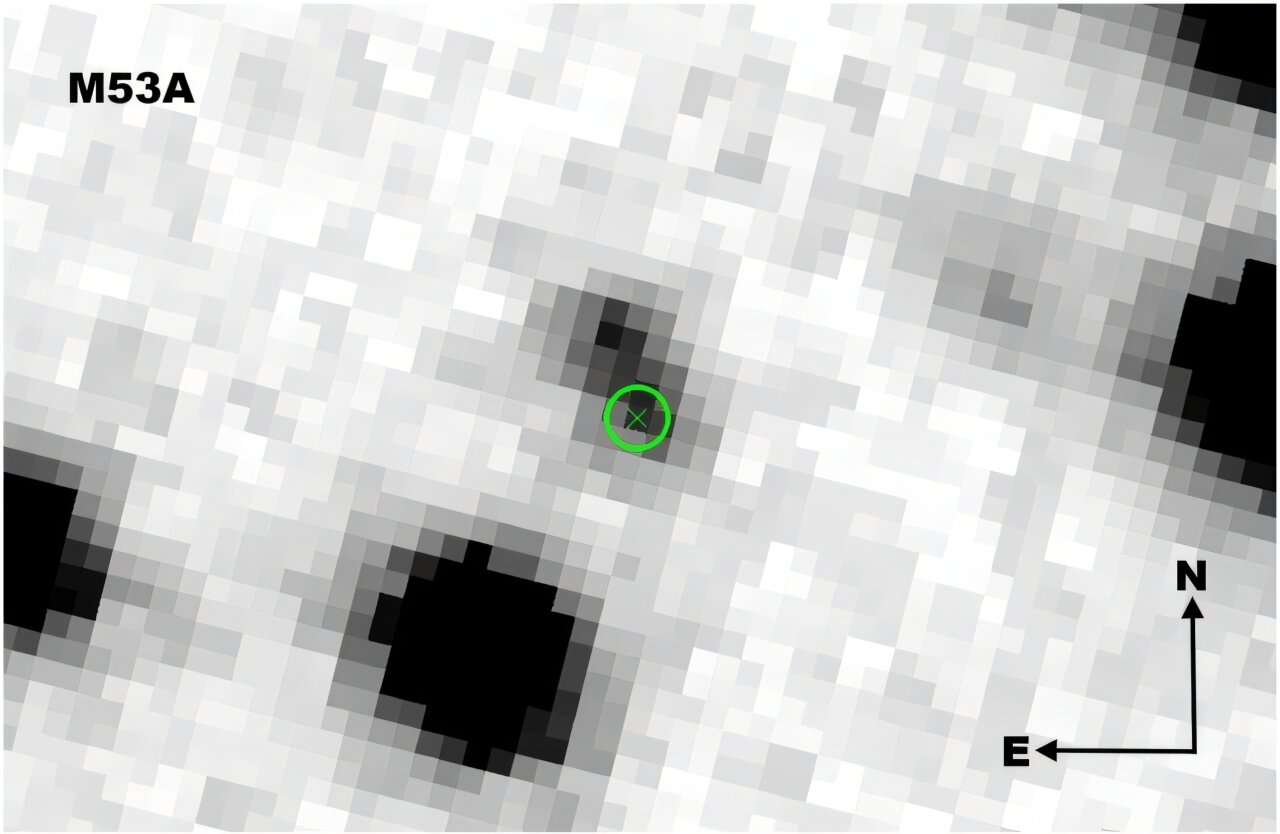Astronomers have made significant strides in understanding the properties of the pulsar PSR B1310+18A (also known as M53A), thanks to the advanced capabilities of the Five-hundred-meter Aperture Spherical radio Telescope (FAST) and archival data from the Arecibo Observatory. This new study, recently published on the arXiv preprint server, sheds light on the pulsar’s unique characteristics, offering valuable information about both the pulsar itself and its surrounding environment.
Pulsars, which are rapidly rotating neutron stars with extremely high magnetic fields, are known for emitting beams of electromagnetic radiation. These emissions are typically detected as bursts of radio waves. While radio waves are the primary means of detecting pulsars, some can also be observed in X-rays, gamma-rays, and even in the optical spectrum. As fascinating cosmic objects, pulsars like PSR B1310+18A provide crucial clues about stellar evolution, extreme physics, and the behavior of matter under intense conditions.
Discovery of PSR B1310+18A
The pulsar PSR B1310+18A was first discovered in 1989 by the Arecibo Observatory. It resides in the globular cluster (GC) NGC 5024, also known as M53, which is approximately 60,000 light-years from Earth. Globular clusters are dense, spherical collections of stars, many of which are very old, and they provide a rich environment for studying stellar dynamics and evolution.
PSR B1310+18A has a spin period of just 33.16 milliseconds, meaning it completes a full rotation in just over one-thirtieth of a second. This rapid rotation makes it one of the more energetic pulsars in terms of its rotation rate. In addition, the pulsar has a dispersion measure of about 24.93 pc/cm³, which is a key parameter in understanding the density of the interstellar medium along the line of sight to the pulsar.
Binary System and Companion
The pulsar is part of a binary system, in which it orbits a companion object. The orbital period of this binary system is about 256 days, and it has a low orbital eccentricity, meaning the orbit is nearly circular. Previous observations have suggested that the minimum mass of the companion star is around 0.3 solar masses. However, despite these early discoveries, no comprehensive timing solution for the pulsar had been published before.
This lack of detailed timing data prompted a team of astronomers, led by Yujie Lian from the Beijing Normal University in China, to investigate the pulsar further. Using the high sensitivity of FAST and the archival data from Arecibo, the team was able to gather 35 years’ worth of data on the pulsar, spanning from March 1989 to May 2024. The data allowed the astronomers to derive a precise timing solution for PSR B1310+18A and contribute significantly to our understanding of the pulsar’s dynamics.
Precise Position and Motion
One of the key achievements of Lian’s team was the determination of the precise position and proper motion of PSR B1310+18A. The pulsar is located about 0.52 arcminutes from the center of the NGC 5024 globular cluster, a relatively close distance that could provide important clues about the pulsar’s interaction with the other stars and objects in the cluster.
Additionally, the proper motion of the pulsar was measured to be −0.36 mas/year in right ascension and −0.62 mas/year in declination. Proper motion refers to the angular movement of an object across the sky, and these measurements help astronomers understand how the pulsar is moving relative to the background stars and its cluster environment.
Spin-Period Derivative and Pulsar’s Age
An important finding in this study was related to the spin-period derivative of PSR B1310+18A. The spin period is the time it takes for the pulsar to complete one full rotation. Over time, this period gradually increases due to the pulsar losing rotational energy. This effect is known as spin-down. In the case of PSR B1310+18A, the study found that the pulsar’s spin-down could not be explained by the usual acceleration effects in the cluster, leading the astronomers to conclude that the intrinsic spin-down of the pulsar itself dominates the observed spin-period derivative.
The characteristic age of the pulsar, which represents the time it would have taken to slow down from an initial rapid rotation to its present rate, was estimated to be between 700 and 850 million years. This age suggests that PSR B1310+18A is relatively old compared to some other pulsars, and it helps to place it within the evolutionary timeline of stars in its globular cluster.
Additionally, the strength of the pulsar’s magnetic field was measured to be relatively low, between 4.5 and 5 billion Gauss, which is still many orders of magnitude stronger than Earth’s magnetic field but typical for a pulsar.
The Pulsar’s Companion: A Helium White Dwarf
Another significant result from the study was the identification and characterization of PSR B1310+18A’s companion. Based on the data, the astronomers determined that the companion is a helium white dwarf. These stars are the remnants of low- to medium-mass stars that have exhausted their nuclear fuel and shed their outer layers, leaving behind a dense, hot core.
The white dwarf in this system has an estimated mass of 0.39 solar masses, which is in line with the mass expected for this type of object. The companion white dwarf also has an effective temperature of approximately 18,000 K, which is relatively hot compared to typical white dwarfs. Furthermore, the cooling age of the white dwarf was estimated to be about 140 million years, which places the formation of this system relatively recently in the history of the globular cluster.
The study’s findings suggest that the PSR B1310+18A system formed quite recently in the context of the NGC 5024 globular cluster, meaning that the pulsar and its companion may have been born from the same stellar population and share a similar age.
Concluding Remarks
The findings from this study represent a significant advancement in our understanding of PSR B1310+18A and its environment. By combining FAST‘s modern observational capabilities with the historical data from the Arecibo Observatory, astronomers were able to create a detailed picture of the pulsar’s characteristics, its motion through space, and the properties of its companion. The team’s work provides new insights into the behavior of pulsars in globular clusters and offers a clearer view of the complex dynamics of these ancient stellar systems.
PSR B1310+18A is a fascinating example of the extreme conditions in the universe, and further study of pulsars like M53A will continue to improve our understanding of the fundamental physics governing neutron stars, their companions, and their place in the broader context of stellar evolution and galactic dynamics. The data obtained in this study will likely serve as a foundation for future investigations into the many mysteries of the cosmos.
Reference: Yujie Lian et al, Thirty-five years of timing of M53A with Arecibo and FAST, arXiv (2025). DOI: 10.48550/arxiv.2502.02042











